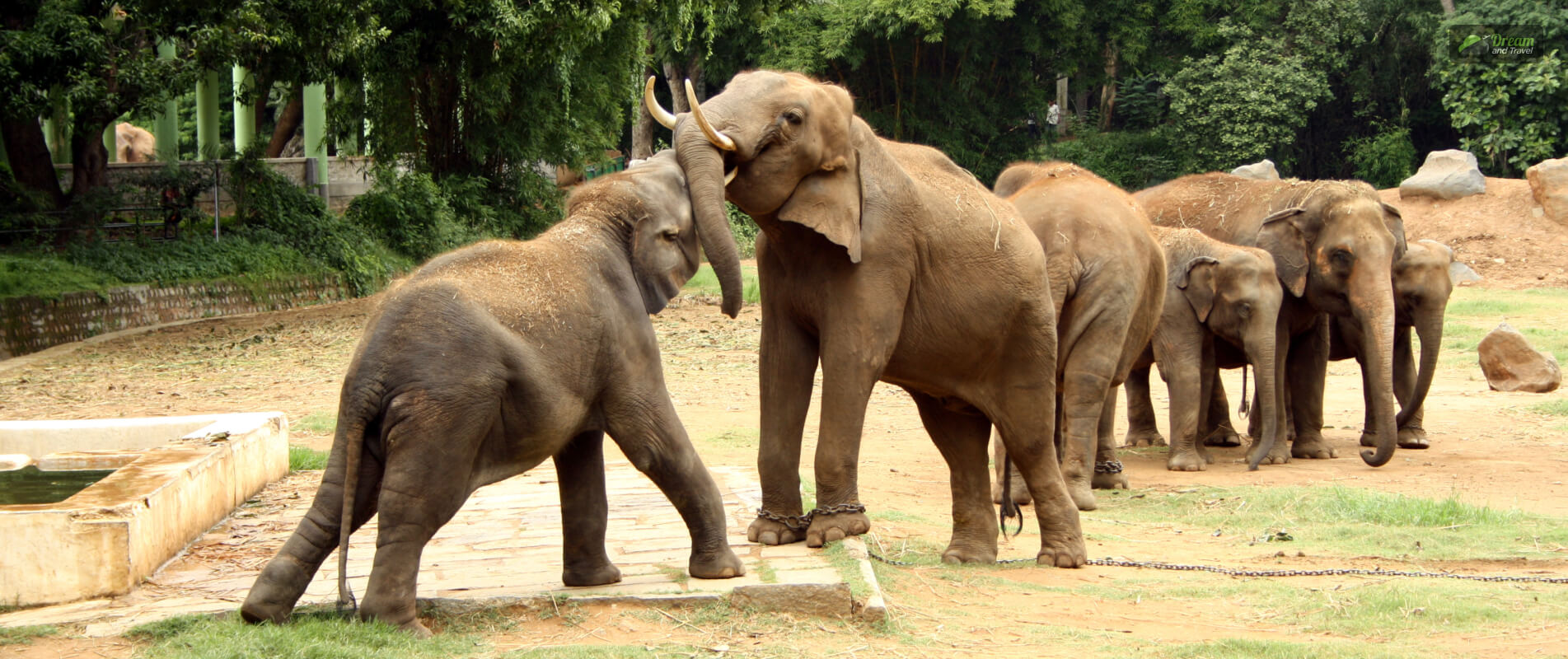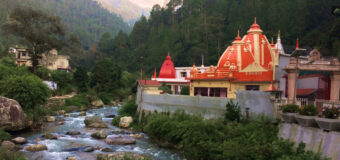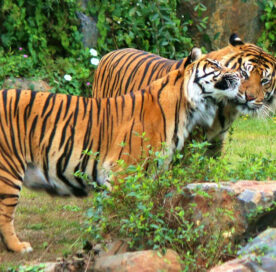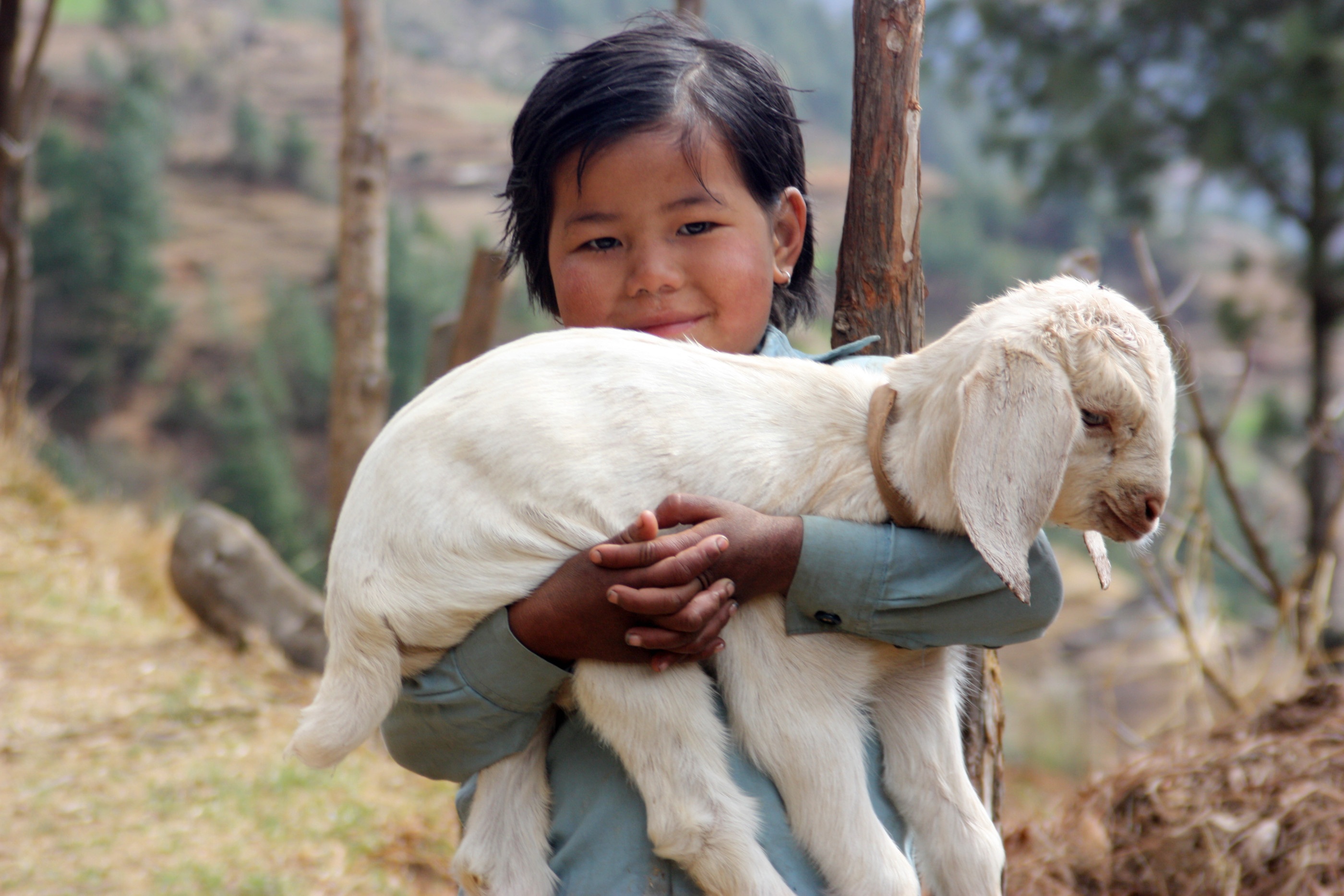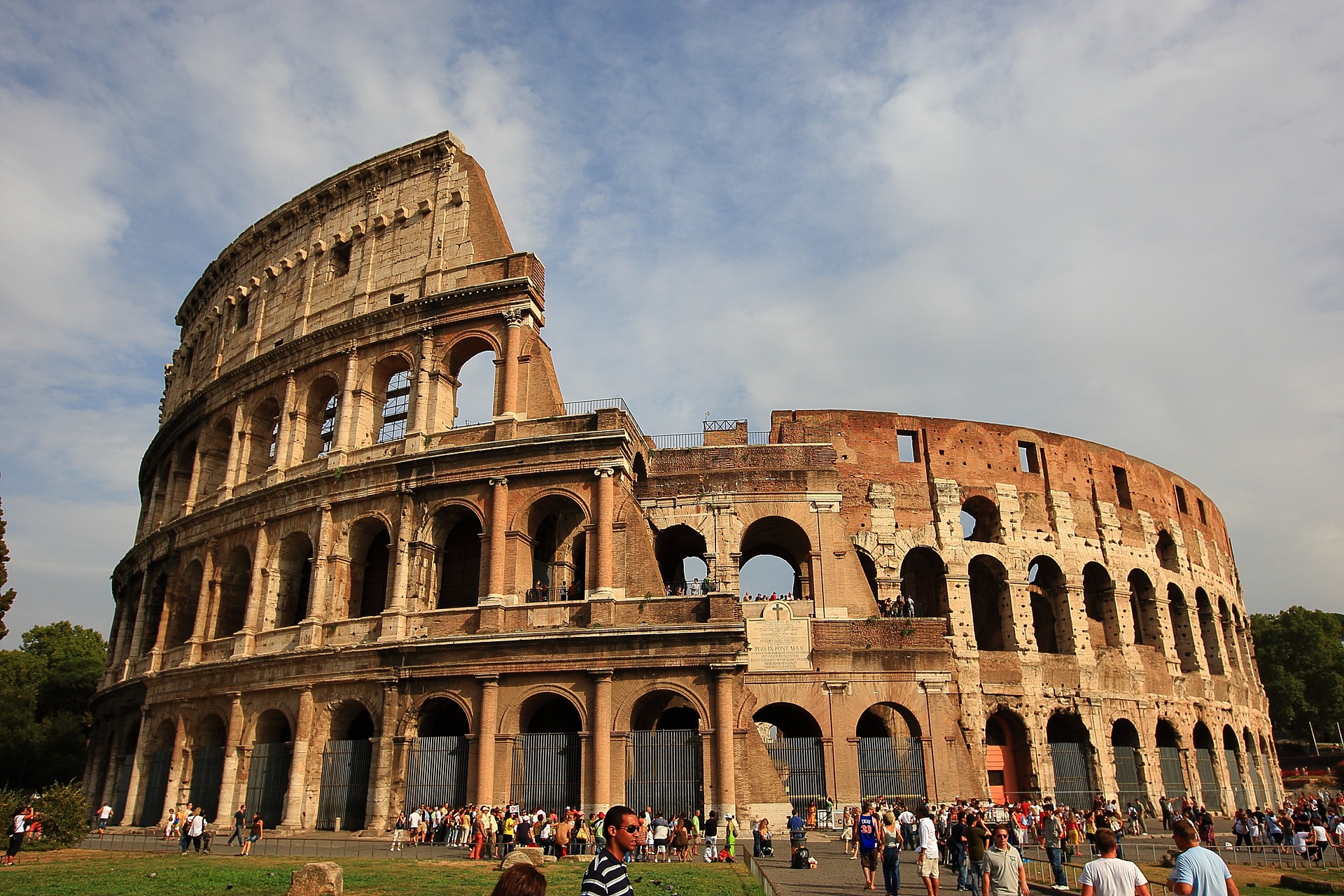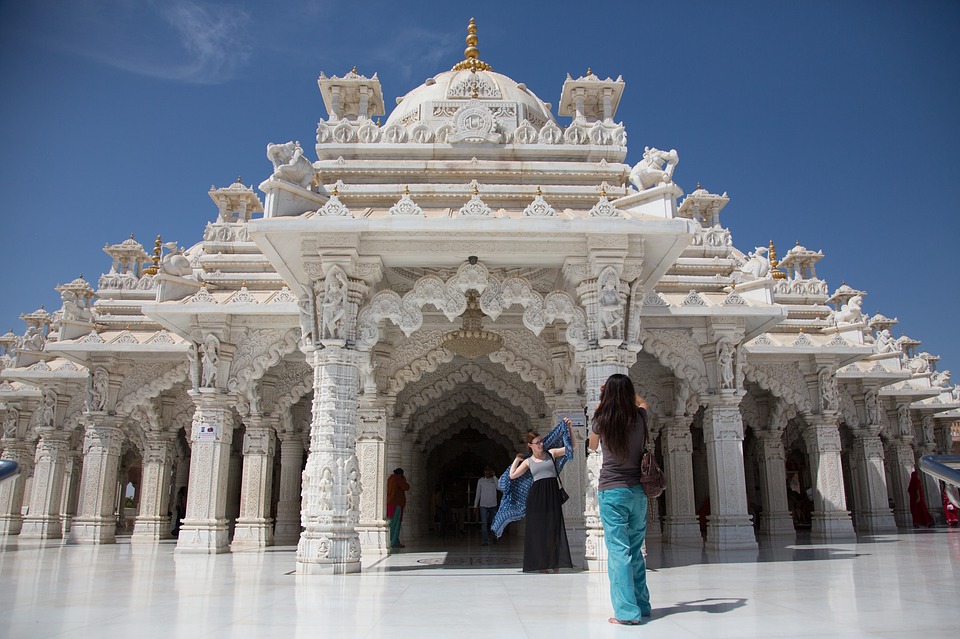The last few days at Mysore Zoo have been quite eventful, as Tara, a tigress, gave birth to five cubs on May 30, 2025. These cubs are born after a three-year lull. So, everyone at the zoo is rejoicing about their arrival.
Nevertheless, 2025 has been a great year for Mysore Zoo, apart from the concerning news of Minnie, the orangutan suffering from pneumonia.
A popular place for 2 days trip from Bangalore, this zoo is about to reintroduce gorillas in 2025 after a gap of 11 years. They have come from the Blackpool Zoo in the United Kingdom.
Additionally, the Mysore Zoo is integrated into the Ecological Experience Zone (EEZ) project, which has recently been launched as part of the Swadesh Darshan 2.0 vision.
Under this project, the zoo entrance will be developed. It will be a plaza welcoming gateway. There will also be a food kiosk and a digital information kiosk.
With all the things happening, one of the best places to visit in Mysore, the Sri Chamarajendra Zoological Gardens, also known as the Mysore Zoo, offers you even more reasons to pay a visit.
In this Dream and Travel Guide, we will talk about its location, best time to visit, top attractions, ticket price, hours open, and more.
Facts You Need To Know About Mysore Zoo
Here are some quick facts you need to know about Sri Chamarajendra Zoological Gardens, or Mysore Zoo.
1. What Are The Mysore Zoo Timings? When Is Mysore Zoo Closed?
Mysore Zoo remains open from 8:30 AM to 5:30 PM every day of the week except Tuesdays.
You can plan your visit at any time of the day. However, if you want to see the big cats in action, you must visit the zoo in the evening or early morning. They love to rest during the daytime.
2. How Much Are The Mysore Zoo Tickets?
Mysore zoo tickets for adults are ₹100, ₹50 for children from 5-12 years, and free for children below 5 years.
Furthermore, you can buy a combo ticket for the Mysore Zoo and Karanji Lake. For adults, the combo ticket price is ₹130, and for children from 5 to 12 years, the ticket price is ₹70.
Also, you can opt for a student concession when visiting the zoo as part of an educational tour. Tickets are free for kindergarten students. However, for students from 1st to 7th standard, the entry fee is ₹30, and for students from 8th to 12th standard, the entry fee is ₹40.
The accompanying teacher will also have to pay ₹40 for an entry to the zoo.
Moreover, there are separate charges for rides in battery-operated vehicles, vehicle parking, and equipment. Have a look at the table below for all the details.
| Vehicles, Parking, and Accessories | Charges |
|---|---|
| Vehicle Parking | Cycle: ₹15 Car / Jeep / Auto: ₹70 Two Wheeler: ₹40 Bus: ₹175 Mini Bus/Tempo: ₹125 |
| Luggage and Camera | Luggage: ₹15 Still Camera: ₹100 Video Camera: ₹200 |
| Riding in Battery-Operated Vehicles | Children (5-12 Years): ₹150 Adults: ₹200 Senior Citizens: ₹150 Online 7 Seater: ₹2400 |
You can book your entry tickets and ride tickets for battery-operated vehicles online. To book your tickets, you need to send “HI” to 9686668818 on WhatsApp.
Alternatively, you can download the Zoos of Karnataka application to your mobile phone (a web version is also available), sign up, and book your tickets.
Moreover, if you encounter any difficulties while purchasing the e-tickets, you can contact our customer care at +91 (0) 821 244-0752.
3. Mysore Zoo: How Many Acres?
The area of Mysore Zoo is 157 acres. However, it started with an area of 10.9 acres.
4. Mysore Zoo: How Much Time Required?
It takes around 2 hours to take a complete tour of the Mysore Zoo. However, the battery-operated vehicle tour lets you explore the zoo in 90 minutes.
5. Who Started The Mysore Zoo?
Sri Chamarajendra Wodeyar Bahadur, the 23rd ruler of the Yadu Dynasty, started this zoo. It was aimed to be a safe breeding ground for rare species in captivity and a place for the well-being of the animals.
Furthermore, with meticulous planning and building the zoo as the safest natural habitat for various species, it has become a prominent place to learn about wildlife.
Today, as you enter the zoo, you can see a bust of the founder. It was installed in the zoo’s centenary year.
When Was The Mysore Zoo Established? What Is The History Of Mysore Zoo?
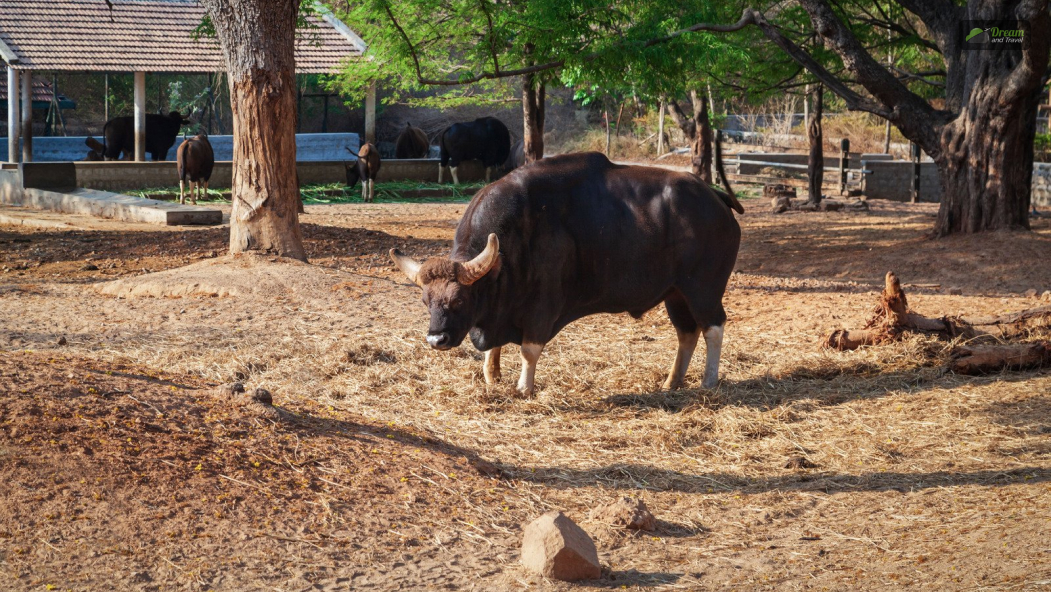
Mysore Zoo was started in 1892. Here are important landmarks in the history of the zoo.
| Year | Significance |
|---|---|
| 1892 | The zoo starts with an area of 10.9 acres. |
| 1907 | The zoo gets another 6.22 acres. Further, for the first time, it gets a large enclosure for apes. |
| 1909 | Mysore Zoo is named after Sri Chamarajendra Wodeyar Bahadur, its founder. Mr. G.H. Krumbeigal, a horticulturist and landscaper from Germany, created the amazing landscape of the zoo. |
| 1948 | The total area of the zoo increased to 78 acres with the addition of Kensington Gardens and Thandisadak. The Horticulture Department takes ownership of the zoo. |
| 1960 | Indian Board for Wildlife recommends the designation of the zoo as a “National Breeding Centre of wild animals” and offers complete financial assistance. |
| 1972 | The Forest Department takes up the administration of Mysore Zoo. |
| 1976 | Zoo Authorities acquire the Karanki Lake. |
| 1979 | The Zoo Authority of Karnataka takes up the administration of Mysore Zoo. |
| 1984 | The zoo launches the animal adaptation program. It started with Koorghalli Rescue. |
| 2020 | Mysore Zoo has become a modern hub for 1,450 animals from over 168 species, representing 50 countries. |
| 2022 | The zoo focuses on education and conservation, featuring a diverse array of animals. Naturalistic habitats at the zoo aid in breeding programs for endangered animals. |
| 2024 | From 21st to 31st December, the zoo gets 239,852 visitors. |
| 2025 | The Mysore Zoo becomes a part of the Ecological Experience Zone (EEZ) project to boost tourism in Mysore. |
What Are The Animals In Mysore Zoo? (With Other Attractions In The Zoo)

Mysore Zoo, also known as Mysuru Zoo, operates in collaboration with various government departments and the Central Zoo Authority.
Additionally, it continues to receive animals from various zoos in other countries, as the gorillas were transferred to Mysore from the UK.
Furthermore, the zoo prioritizes animal comfort, wellness, sanitation, hygiene, and enhanced care facilities. Additionally, various programs have been established to facilitate the safe breeding of endangered and exotic animals in captivity.
Additionally, it serves as an orphanage for abandoned or homeless animals. Also, it has received a tremendous response for its Animal Adoption Programme.
Nevertheless, here are the animals in the Mysore Zoo.
| Types of Animals | Animals |
|---|---|
| Primates | ‣Orangutans ‣ Gorilla ‣ Chimpanzee ‣ Marmoset ‣ Capuchin ‣ Monkey ‣ Hoolock ‣ Gibbon ‣ Lion Tailed Macaque ‣ Ring-tailed Lemur ‣ Baboon ‣ Nilgiri Langur ‣ Common Langur |
| Small Cats | ‣ Common Palm Civet ‣ Jungle Cat, ‣ Leopard Cat ‣ Small Indian Civet |
| Big Cats | ‣ Cheetahs ‣ Leopards ‣ Lions ‣ Tigers ‣ Jaguar |
| Big Mammals | ‣ Gaur ‣ Hippopotamus ‣ Asian Elephants ‣ African Elephants ‣ Southern White Rhino ‣ Indian Rhino |
| Antelopes and Deer | ‣ Swamp Deer ‣ Spotted Deer ‣ Hog Deer ‣ Nilgai ‣ Mouse Deer ‣ Black Buck ‣ Barking Deer ‣ Four-Horned Antelope Goral |
| Terrestrial Birds | ‣ Pheasants ‣ Macaws ‣ Sarus Crane ‣ Parakeets ‣ Parrots ‣ Peafowl ‣ Great Indian Hornbill |
| Aquatic Birds | ‣ Pelicans ‣ Eurasian spoonbill ‣ Flamingo ‣ Adjutant Stork |
| Flightless Birds | ‣ Cassowary ‣ Ostrich ‣ Emu ‣ Rhea |
| Ducks | ‣ Spotted Whistling Duck ‣ Carolina Wood Duck ‣ Comb Duck ‣ Muscovy Duck |
| Reptiles | ‣ Indian Cobra ‣ Seven Types of Crocodiles ‣ Iguana ‣ King Cobra ‣ Anaconda |
Additionally, the continuous planting of saplings, the lush greenery of the garden, its sustainable practices, and waste management programs are other notable features of the zoo.
Where Is Mysore Zoo Located?
The Mysore Zoo is situated on Zoo Main Road, Indiranagar, Mysuru, Karnataka. Its contact number is 0821 244 0752.
The zoo is located near Mysore Palace and Chamundi Hill. Other places to visit near the zoo are:
- Regional Museum of Natural History, Mysore
- Lalitha Mahal Palace
- Karanji Mansion
- Karanji Lake
- Railway Museum Mysore
- Kishkindha Moolika Bonsai Garden, etc.
How To Reach Mysore Zoo?
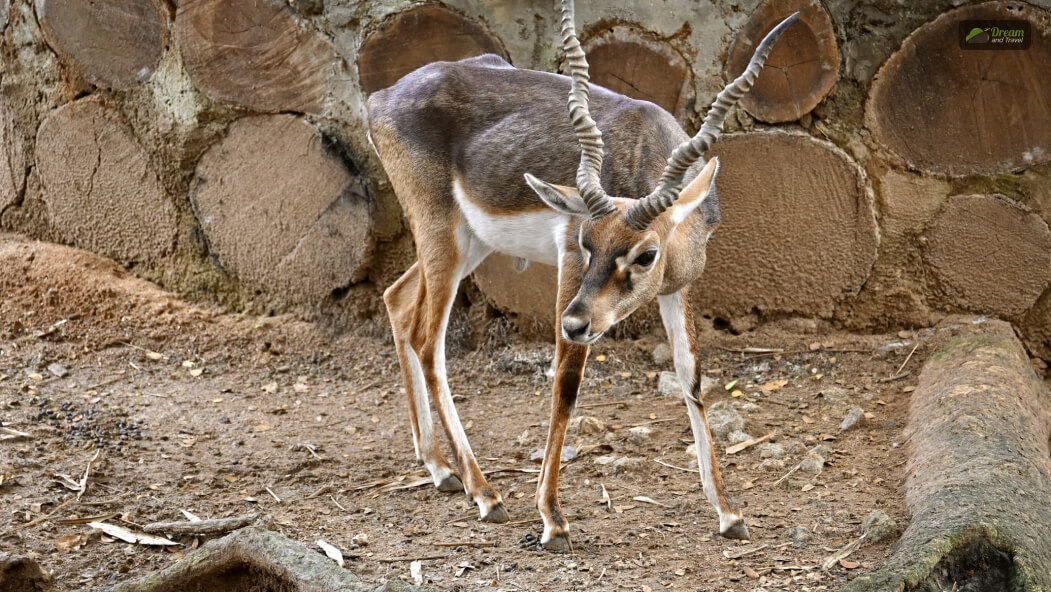
Mysore Zoo is located just 3 km away from the Mysore Palace, and it is also very close to the Mysore City Center.
So, you can easily reach this zoo by road, train, and air. Here are the details.
1. How To Reach Mysore Zoo By Road?
You can reach the zoo by taking a bus, taxi, or auto.
- Take an auto-rickshaw to reach the zoo. The charges will be INR 50-100 based on your location.
- You can take the buses run by Karnataka State Road Transport Corporation (KSRTC) on the Chamundi Hill route.
- Further, you can take a taxi or car ride from the Mysore City Center or other prominent locations to reach the zoo.
2. How To Reach Mysore Zoo By Train?
Mysore Junction Railway Station is the nearest railway station to the zoo. The distance between these two places is around 3 km.
You can take an auto, a taxi, or a car from the railway station to reach the zoo.
3. How To Reach Mysore Zoo By Air?
Mysore Airport is the nearest airport to Mysore Zoo. The airport is just 12 km away from the City Center, and from the airport, you can take a taxi or a car to the zoo.
What Is The Best Time To Visit Mysore Zoo?
Fall, winter, and spring are the best times to visit the Mysore Zoo. So, October to March are the best months to visit the zoo.
The temperature in the zoo remains around 20-30 degrees Celsius in these months. So, you can explore the outdoors comfortably, and the animals stay active in these months.
From April to June, or the peak summer season, the zoo is uncomfortable as the temperature hovers around 35 degrees Celsius.
However, if you want to enjoy the lush greenery of the zoo from June to September, or the monsoon months.
⁕⁕⁕ Quick Tips For Visiting Mysore Zoo ⁕⁕⁕
- The zoo has a reverse osmosis (RO) drinking water facility. However, you must carry water.
- Maintain a safe distance and respect the animals.
- Wear comfortable shoes and avoid peak hours, such as public holidays or weekends.
Why Is Mysore Zoo Unique? Yes, It’s Definitely Worth A Visit
With a history spanning 133 years, the Mysore Zoo is more than just a habitat for animals. It is a center for conservation education and operates as a self-sustaining zoo.
Furthermore, it stands out for its role in rescuing and rehabilitating wild animals, as well as serving as a breeding facility for endangered species.
Moreover, it functions as a place of inspiration and fosters appreciation, as the mission of the zoo is
“To connect visitors and animals through exemplary animal welfare and care, best educational and inspirational experiences, fostering public appreciation and support for wild animals and conservation.”
